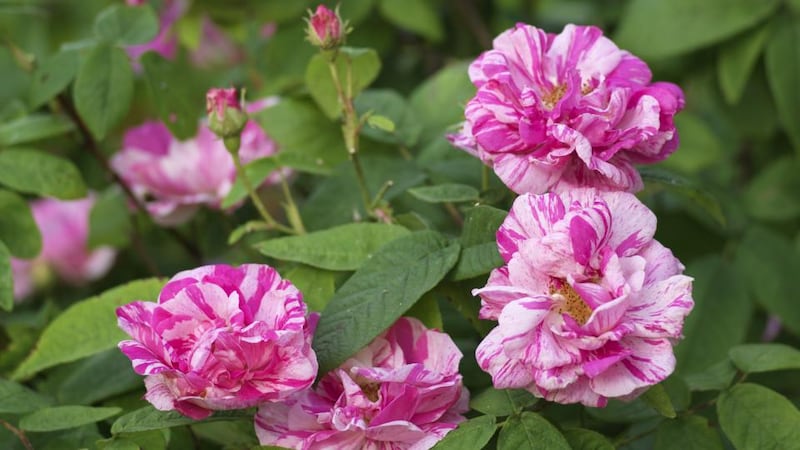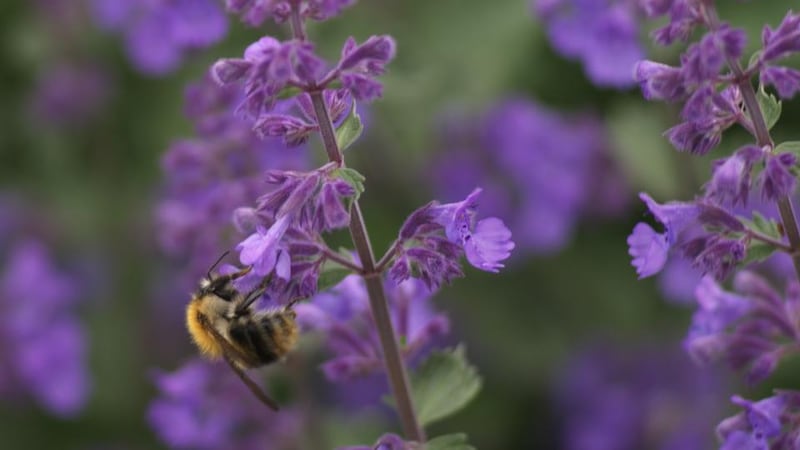Of all the ways in which a garden appeals to our senses, the element of scent is surely among the most mysterious. We can’t touch, see, hear or taste it, but the delicate perfume of a rose is as real and as recognisable to us as its flower. Our experience of it is the result of tiny, fragrant molecules that float in the air we breathe.
By sniffing that brightlypetalled bloom, you’re hoovering those floating molecules deep into your nose where they reach an area of sensory tissue (called the olfactory epithelium) and interact with odour receptors. The human nose contains roughly 400 of these and it’s a process that triggers a host of reactions deep within your brain’s limbic system, many of them associated with memory and emotions.
Each smell is chemically unique, a complex, fragrant brew of numerous organic scent compounds, often more than a hundred. It’s the reason why, without the tiniest visual clue, most gardeners can easily distinguish between the smell of cut grass, honeysuckle, sweet pea, even the smell of warm, damp soil after a summer rainshower. Or why, even blindfolded, we can recognise the herbal, green scent of tomato leaves, identify the resinous tones of rosemary, and know the fruity, sugary smell of a ripening strawberry.


But distinguishing between those different smells is about much more than simple recognition. It’s about memories.
Wallflowers remind me of my time as a student at the National Botanic Gardens, while scented geraniums bring back a childhood holiday in West Cork, where the plants grew in pots in the tiny, sunny porch of the cottage in which we were staying, and where, every time someone brushed against their sun-warmed, cobweb-festooned leaves, they released a perfume that was a heady mix of mint, lemon and apple.
We’re not, of course, the only species attracted by the smell of plants. The sweet perfume of a flower, for example, is a blatant advertisement to pollinators and thus a useful aid to reproduction. But by attracting beneficial insects, flowers add yet another layer to our pleasurable sensory experiences of a garden.
What gardener doesn’t enjoy hearing the lazy buzz of a bee collecting nectar, or the sight of a hoard of butterflies feeding from the purple flower spikes of a buddleia bush? Enjoyment aside, there is convincing evidence that scent also has the power to alter our moods and increase our sense of wellbeing; it is, after all, one of the reasons why perfume has such a long history of use.
So the next time that you find yourself in a garden centre pondering a plant or seed purchase or two, take a moment to consider its scent. When choosing a particular variety, bear in mind that many modern varieties of flowering plants have been specifically bred for flower size or colour or growth habit rather than for perfume, a process that’s often inadvertently resulted in them losing something of their original scent. An example is the sweet pea, where the strongest scented varieties are often the oldest (breeders are now beginning to rectify this with the introduction of what are known as the “Modern Grandifloras”).
I always grow the variety known as ‘Cupani’, a sweet pea with deeply scented purple/maroon flowers whose cultivation can be traced right back to the 17th century. While its two-toned flowers are smaller and less showy than modern varieties, they are unbeatable for the rich intensity of their perfume.
You can amplify the experience of scent in a garden by containing it. A sunny, walled courtyard, for example, is a great place to grow strongly perfumed climbers such as the climbing roses "Desprez à Fleur Jaune" or "Cécile Brunner", the evergreen star jasmine, Trachelospermum jasminoides, honeysuckle or the fragrant Clematis flammula whose star-shaped white flowers smell of vanilla.
In the mixed border, some other deliciously scented flowering plants that you might consider growing include phlox, lilies, sweet William, sweet rocket, shrub roses such as "Comte de Chambord", mock orange and osmanthus, along with a smattering of night-scented stock or Matthiola bicornis (direct-sow this in early summer).
Add some species of true geraniums including Geranium macrorrhizum. The latter, which is also known as the scented cranesbill, is an undemanding, ultra-versatile, hardy flowering perennial which forms low cushions of semi-evergreen foliage and will even tolerate dry shade. Not only are its deeply cut, light-green leaves richly aromatic (traditionally they were used as a source of oil of geranium, for use in aromatherapy) but this useful ground-cover plant produces an abundance of pretty flowers through the early summer months.
Amongst the different varieties available in garden centres, look out G.m.’White-Ness’ (white flowers) G.m. ‘Bevan’s Variety’ (pink-crimson flowers) and G.m. ‘Ingerswen’s Variety’(crimson-purple flowers) . Ideally, position these close to a path or seating area where you’ll naturally brush against the leaves, a process that gently bruises the foliage and causes it to release its scent into the air.
DATES FOR YOUR DIARY
Today, 10am-5pm, “Blarney in Bloom Summer Garden Fair” at Blarney Castle, Co Cork, speakers include Diarmuid Gavin, Klaus Laitenberger and Helen Dillon, see blarneycastle.ie for details
Saturday and Sunday, July 19th and 20th (12-5pm each day), RHSI Sweet Pea Show in the Teak House, National Botanic Gardens, Glasnevin, see rhsi.ie











